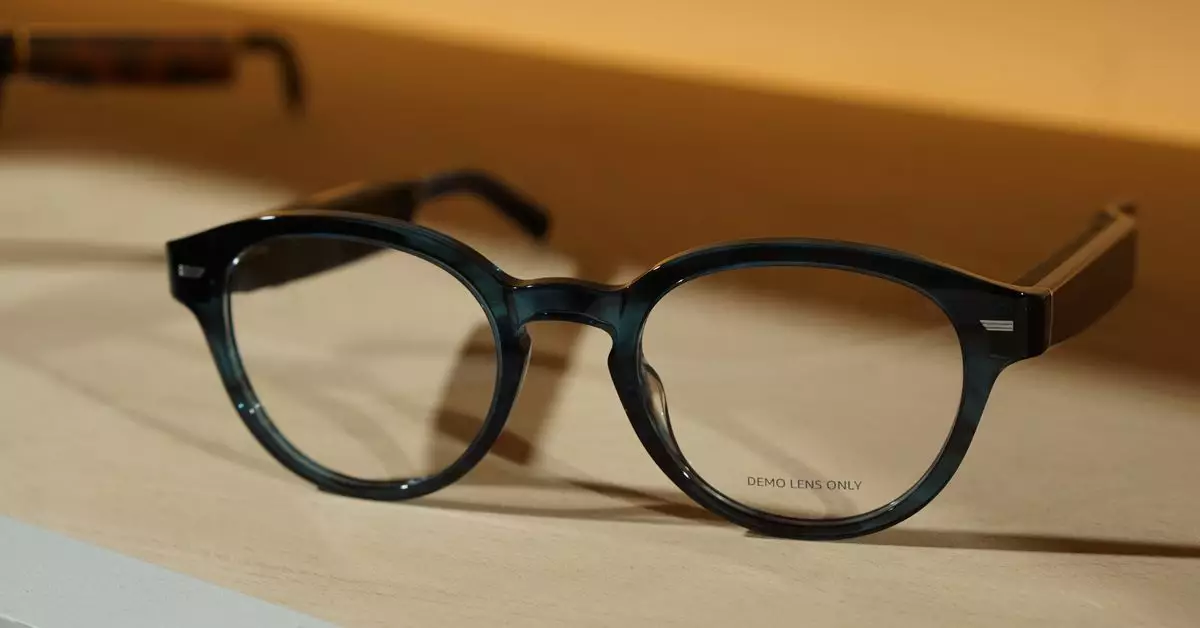Amazon’s ambition to revolutionize the logistics industry continues unabated, as evidenced by reports indicating the development of smart glasses specifically designed for delivery drivers. This initiative, dubbed “Amelia,” aims to enhance the efficiency of delivery operations by providing drivers with turn-by-turn directions in a hands-free format. However, as we delve into this endeavor, it becomes apparent that while the concept is promising, there are significant hurdles to clear before such technology can be implemented effectively.
The focus of Amazon’s smart glasses is the often-challenging last 100 yards of delivery—a term used to describe the final steps in the delivery process. This stage can be fraught with obstacles, from navigating complex building structures to maneuvering through crowded streets. By integrating a display into smart glasses, Amazon envisions a world where delivery drivers receive precise instructions catered to their immediate environment. This could include detailed directions like “turn left after the elevator,” significantly reducing the time spent figuring out delivery routes.
The theoretical outcome of this technology is enticing. By streamlining the delivery process and enhancing driver situational awareness, there exists a potential for increased productivity, allowing drivers to handle more packages in a shorter time frame. However, promising efficiency must be weighed against practical implementation.
One of the most impeditive factors behind the development of “Amelia” lies in the technical challenges associated with integrating a display into smart glasses. The current Echo Frames, which are audio-only, have already faced criticism for their limitations. Adding a display requires not only advanced engineering know-how but also considerations for weight and battery life. Drivers work long shifts, necessitating smart glasses that can endure at least eight hours of use without frequent recharging. Achieving this while keeping the product lightweight and comfortable is a formidable engineering challenge that past efforts by companies such as Google and Microsoft demonstrate is not easily conquered.
Moreover, accommodating drivers who may already use corrective lenses adds another layer of complexity. It is vital that Amazon consider existing eyewear needs to ensure that their smart glasses are inclusive and usable for a wide range of individuals.
Adoption and Integration: A Tangible Barrier
Even if Amazon successfully tackles the engineering challenges, a separate hurdle looms—the adoption of this new technology by delivery drivers. The fact that a significant portion of Amazon’s delivery workforce consists of independent contractors complicates the situation. Convincing these drivers to transition to using smart glasses could be contentious, particularly if they view the technology as intrusive or unnecessary.
Additionally, many smart glasses projects have failed to gain traction in the consumer market. With last-gen Echo Frames reportedly selling fewer than 10,000 units compared to competitors like Ray-Ban Meta, Amazon must evaluate whether this pivot to enterprise-level solutions will deliver better outcomes. Their previous attempts at consumer-oriented products highlight a critical need for a market strategy that genuinely resonates with users.
Strategic Considerations and Future Implications
Navigating the complex dynamic of last-mile delivery through advanced technology is a strategic necessity for Amazon. While past innovations in smart glasses have often pivoted toward enterprise applications after underwhelming consumer interest, the broader implications of this technology extend beyond just efficiency in deliveries. Should Amazon find success with this initiative, there exists the potential for widespread applications of smart glasses technology across various facets of logistics, disaster response, or even retail.
However, it remains uncertain whether the “Amelia” technology will be exclusive to Amazon’s delivery network or if the company may explore partnerships with other enterprises. The tech developed for delivery drivers could be adapted for broader uses, expanding Amazon’s influence in tech industries.
While the concept of smart glasses for delivery drivers appears promising, multiple challenges must first be addressed. From engineering intricacies to user adoption and long-term implications, Amazon’s venture into this space could ultimately reshape the future of last-mile delivery—or serve as a cautionary tale of overambition in tech development.


Leave a Reply